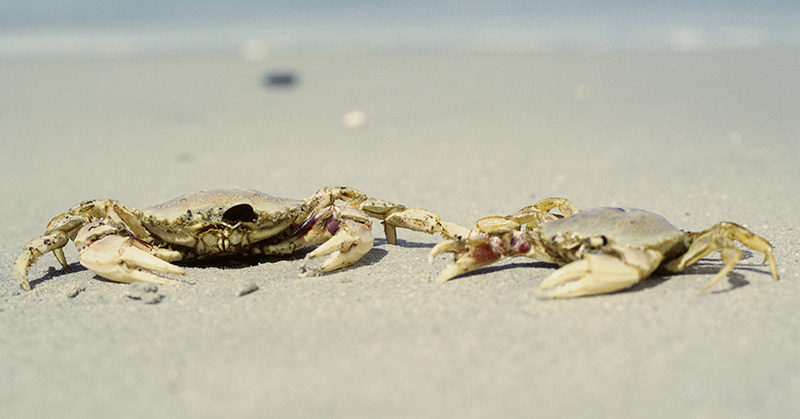A study published in the Biological Journal of the Linnean Society shows that different species are evolving into crabs and have been for quite a long time. This new discovery will help scientists better understand evolution and how it works. (1)
Different Species Evolving Into Crabs
There are various types of crabs in the world, however, not all of them actually come from the same species of animal the way most animal “families” do. A study has discovered that at least five different species began as one kind of crustacean and then ended up evolving into crabs. (2)
This process is known scientifically as carcinization and familiarly as crabification. (1) Essentially, it is when a species does not start out as a crab but then over time develops a similar broad, flat-shaped shell and/or similar internal systems (i.e. vascular or nervous systems).
The process takes time, of course, but these non-crabs evolve into crabs. (2)
Read: Ancient tree with record of Earth’s magnetic field reversal in its rings discovered
Why Are Species Evolving Into Crabs
There are a number of reasons why carcinization occurs. These include (2):
- Time
- Temperature
- Gravity
- Similar living conditions
For these different crustacean species that ended up evolving into crabs, it was the perfect storm. For them, evolving into crabs was the best possible means of survival. They adapted, or evolved so that their species could continue on rather than going extinct. (2)
Crustaceans Aren’t the Only Modern Evolvers
Evolution is not an event that happened, it is a phenomenon that continues to occur every day. As our world continues to change, species are facing a a choice: Adapt or go extinct.
Adapting to Urban Life
Known as Urban Darwinism, there are several species that are changing in order to make it in the man-made environments that have become towns and cities. (3) Three examples of this are (3):
- Birds that sing at a higher pitch to compete with traffic noise versus those that live in the country.
- White-footed mice in New York City adapted to better handle the fatty foods that are dropped on the city streets.
- Caribbean lizards are currently going through physical adaptations in order to better navigate smooth fence posts as opposed to the rough tree bark that they are used to.
While these adaptations are necessary, there is a risk of some species being lost as they require completely natural environments that haven’t been touched by humans in order to survive. (3)
Adapting to Climate Change
Climate change is the biggest threat to the natural world, and many species are having a hard time adjusting to the pace that these changes are happening at. (4) Some species that have learned to adapt are (4):
- Table Corals to prevent bleaching in warming waters
- Pink salmon are migrating two weeks earlier to spawn as they handle warmer waters
- Tawny Owls are turning darker in color to better blend in with their less snowy backdrop
- Pitcher plant mosquitoes have learned to delay hibernation to account for the longer growing season
- Fruit flies in Southern Australia are adapting to the hotter, drier climate
- Great Tits are adapting to be able to vary their egg-laying time depending on when their prey, the caterpillar, is reaching maturation, which happens earlier due to warmer temperatures
The Bottom Line
Evolution is the train that keeps on going. Even humans are adapting over time to adjust to how different our lives are now from what they were like hundreds of years ago. While not every animal will turn into a crab, it is certainly interesting to watch how species develop over time.
Keep Reading: These Asian Sea Nomads Are the First Known Humans to Have a Genetic Adaptation to Diving
- https://www.popularmechanics.com/science/a34389129/crab-evolution-carcinization/
- https://academic.oup.com/biolinnean/article/121/1/200/3089703
- https://e360.yale.edu/features/urban-darwinism-how-species-are-evolving-to-survive-in-cities
- https://www.smithsonianmag.com/science-nature/ten-species-are-evolving-due-changing-climate-180953133/?page=1

